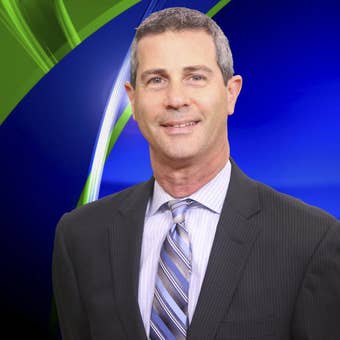Fox News Flash top headlines for June 21
Fox News Flash top headlines are here. Check out what's clicking on Foxnews.com.
Voters in the nation's most populous city head to the polls Tuesday to choose a new mayor for the first time in eight years.
But it may be quite some time before we know who won New York City's Democratic mayoral primary election.
NYC CRIME SURGE MAKES MAJOR IMPACT IN CITY'S MAYORAL PRIMARY
With 13 candidates on the ballot – including eight who are considered major contenders – and New York City this year using ranked-choice voting for the first time for a mayoral contest, it could be a couple of weeks into July before a winner is declared.

Rafael Risember, 62, prepares to scan his ballot as he participates in early voting in the primary election, Monday, June 14, 2021, at the Church of St. Anthony of Padua in the Soho neighborhood of New York. (AP Photo/Mary Altaffer)
Ranked-choice voting allows those casting ballots to rank as many as five candidates in order of preference when voting. If no candidate tops 50% – which is an extremely likely scenario considering the crowded field – the ranked-choice voting kicks in, with ensuing rounds eliminating those with the least amount of votes. The votes of those candidates eliminated are reallocated to the remaining candidates. The process continues until a candidate reaches 50% of the vote.
So what will we know on Tuesday night, after the polls close at 9 p.m. ET?
The New York City Board of Elections says it will release a preliminary tally of votes cast on primary day and the early voting period, which began June 12 and ended Sunday. But their tally won't include absentee ballots and will only show voters' first- choice pick.
MESSAGE TO NEXT NYC MAYOR: MAKE STREETS SAFE AGAIN
The Board of Elections said it will start tabulating the ranked-choice voting system on June 29, a week after primary day, and says it will provide unofficial results as the process continues.
That count won’t include absentee votes. But we should find out on Tuesday night how many absentee ballots were requested and returned as of primary day.
In the last New York City mayoral contest, when now-term-limited Mayor Bill de Blasio was reelected in 2017, absentee ballots accounted for only 2.5% of the overall vote. But amid the coronavirus pandemic, there was a surge in the number of people voting by absentee ballot. They accounted for 38% of the votes cast in last June’s primary and 22% of the electorate in November’s general election.
So why the holdup in counting absentee ballots?
New York state law dictates that all votes, including absentee and affidavit votes, are verified and counted. With a surge in absentee balloting, that takes time.
And last year an extra protection was added – to make sure that every absentee ballot counted. It’s called "curing," a process that gives voters a chance to make a correction for certain errors on their ballot, such as failing to sign the envelope in which their ballot is sealed. Before last year, such ballots were tossed. Now, the Board of Elections will contact voters with such ballots, and the voters will have seven days to fix and return their ballots.
Last year, amid the surge in absentee balloting, it took more than three weeks for election officials to determine the winners in a handful of U.S. congressional primaries in New York City.
CLICK HERE TO GET THE FOX NEWS APP
While the Democratic primary is getting all of the attention, there is a GOP mayoral contest – with two candidates vying for the Republican nomination.
But the winner of the Democratic primary will be considered the front-runner in November's election, as the city is a Democratic stronghold.






